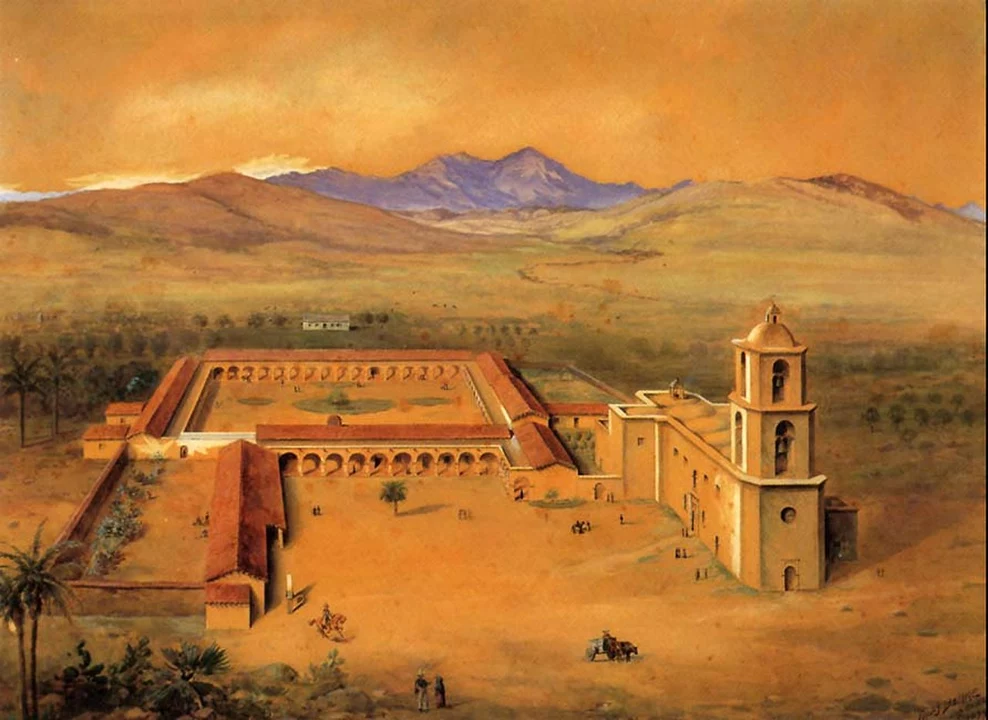
Introduction: Spain's Expansion into California
Before we dive into the reasons behind Spain's establishment of missions and presidios in California, let's first understand what these terms mean. Missions were religious outposts established by Spanish priests to convert the native population to Christianity, while presidios were military forts built to protect the missions and the surrounding territory. Now that we have a basic understanding, let's explore the factors that led to Spain's expansion into California and the establishment of these missions and presidios.
The Race for Territory in the New World
One of the primary reasons for Spain's expansion into California was the competition for territory among European powers. By the 18th century, Spain, Britain, Russia, and other European nations were all vying for control of the New World. Spain, in particular, was eager to maintain its grip on the vast territories it had already claimed in the Americas. Establishing missions and presidios in California was a strategic move to secure their claims and prevent other nations from encroaching upon their territory.
Protecting Trade Routes and Resources
Another significant factor in Spain's decision to establish missions and presidios in California was the need to protect valuable trade routes and resources. California's coastline provided access to the lucrative Manila Galleon trade route, which connected Spanish colonies in the Americas with the Spanish East Indies. By establishing a presence in California, Spain could protect this vital trade route and maintain control over the valuable resources found in the region, including gold, silver, and agricultural products.
Spreading Christianity and Spanish Culture
Spain's primary objective in establishing missions in California was to spread Christianity and Spanish culture among the native people. The Spanish believed that converting the indigenous population to Christianity would make them more receptive to Spanish rule and help solidify their control over the region. Additionally, the proliferation of Spanish culture and religion would help to maintain a sense of unity among the various Spanish territories in the Americas.
The Role of the Franciscan Order
The Franciscan Order, a Catholic religious order, played a crucial role in the establishment of missions in California. Under the leadership of Father Junipero Serra, the Franciscans set out to convert the native population and establish a network of missions throughout the region. These missions would serve as centers of religious, cultural, and agricultural development, helping to transform the landscape and solidify Spain's presence in California.
The Construction and Function of Presidios
As mentioned earlier, presidios were military forts built to protect the missions and the surrounding territory. These forts were typically constructed near the missions to provide a sense of security and deter potential threats from both native populations and rival European powers. The soldiers stationed at the presidios also played a crucial role in maintaining order and enforcing Spanish law within the surrounding communities.
Impact on the Native Population
It's essential to recognize the significant impact that the establishment of missions and presidios had on the native population of California. While the Spanish saw their efforts as a means of civilizing and Christianizing the indigenous people, the reality was often much more complex and devastating. Native populations were frequently forced to abandon their traditional way of life and adopt Spanish customs and religion. Additionally, many native people were subjected to forced labor and mistreatment, leading to significant population decline due to disease, violence, and overwork.
Conclusion: The Legacy of Spanish Missions and Presidios in California
In conclusion, Spain's establishment of missions and presidios in California was driven by a combination of strategic, religious, and cultural motivations. While these efforts allowed Spain to maintain control over the region and protect its valuable trade routes and resources, the impact on the native population was often devastating. Today, the remnants of these missions and presidios serve as a reminder of California's complex history and the lasting influence of Spanish colonization in the Americas.